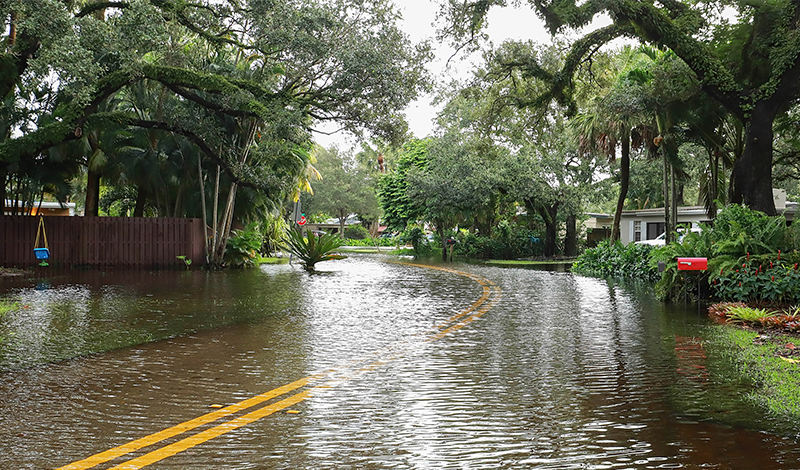Confronting Global Challenges to Resilience
storm.png

Just glance at the headlines – the challenges impacting the future of societal resilience are there: global supply chain disruption, mass movement of displaced people, cyber-caused turmoil and associated risk of consequences, nation-state threats, increasing severity and frequency of disasters, and other environmental factors all add to the complexity of life.
Overall, extreme events with greater frequency and severity and high adverse potential due to systemic interdependence are the new normal. What were once isolated or one-off issues now reveal fragilities impacting the marketplace broadly, communities, and individuals daily on a more intimate level globally. One single organization like FEMA or the Chamber Foundation will not exclusively shape a resilient society. This involves a team effort requiring government, nonprofit, and private sector players in the arena to come together to improve conditions and effectively coordinate before a hurricane or a global shock, such as a pandemic. We’ll be diving into this topic further at our 11th Annual Building Resilience Through Private-Public Partnerships Conference on July 28-29 in Washington, D.C.
Each year the World Economic Forum (WEF) asks business leaders and other experts which major threats they believe countries are most likely to face. In the last report before COVID-19, the top three global risks concern the environment and climate change—with destructive weather leading for the third year in a row. In that survey year following the 2017 disasters of Harvey, Irma, and Maria, plus the wildfires in the west, there were 14 weather disasters in the U.S. with losses topping $1 billion each—from Hurricanes Florence and Michael to the devastating California wildfires. That’s more than twice the annual average from 1980 to 2018.
Another resilience challenge is fixating on the last shock instead of considering other destabilizing disruptions. WEF’s 2021 report warns that “the world will have fallen into the familiar risk management trap of planning for the last crisis rather than anticipating the next” if the COVID crisis lessons only inform how to improve pandemic preparedness instead of sharpening efforts to address other significant challenges.
The 2022 report indicates that navigating the volatile and tension-filled COVID-19-shaped landscape will require addressing pre-COVID challenges that didn’t go away—extreme weather events, climate adaptation, cyberattacks, and other disasters, while also addressing the physical, social, and economic impacts of the pandemic. With the majority of business leaders surveyed indicating they are “worried” or “concerned” about these future risks, it’s clear that confronting them smartly may help place us on a better resilience trajectory.
One additional challenge is that continued heated rhetoric and misinformation cloud reality. Developing a shared commitment between government and an apolitical private sector, from a resilience standpoint, can allow true partnerships to move forward.
Specifically, in the role of the private sector, the biggest impacts exist in playing to core strengths and adjacencies to build partnerships for the business to yield resilience effects. Improving capacity for action internal to the business, crisis coordination with government, and holistic risk management inclusive of climate adaptation, supply chains, social impact, and cybersecurity are always on the strategic readiness checklist.
This landscape presents opportunities for the private sector to shape how they conduct their operations and connect to their communities while mitigating risk. Through the lessons learned in 2017 – the series of hurricanes and the wildfires that forced the federal government to make significant changes in acknowledging the role of the private sector – changed our national doctrine on how we address issues from a cross-sector standpoint. The pandemic highlighted how critical these interconnected networks, systems, and relationships are to the functions of our world.
America’s businesses that are reeling from the effects of COVID-19 still navigate uncertainty as they seek to bolster their supply chain resilience globally and continually bring value to communities across the U.S. This is more difficult for smaller businesses, and the challenge for established enterprises at scale is supporting the continuity of those businesses contributing to economic vigor.
The private sector can work with the government at any level to take action. Businesses must face the challenge to act before a crisis in order to thrive, owning significant systems that support community lifelines. The whole community has an opportunity for businesses to cultivate institutional trust with government that spans administrations or CEO tenure. This highlights one of many reasons we continue to work with the Department of Homeland Security, FEMA, and other partners in holding our annual Building Resilience Conference to foster meaningful connections, assist businesses of all sizes in expanding their capacity for crisis, and expand globally minded corporate citizenship. I invite you to learn more about the event and register here at no cost.